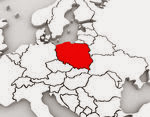The PA Melting pot creates an Ethnic Triangle of multiple nationalities in SE Ohio, SW PA and NW WV. There are 12 MAJOR ethnic immigrant groups from the 1700’s to the 1960’s. This series of articles will focus on these immigrant groups and their cuisine THEN and NOW!!
Saturday, September 16, 2017
Friday, July 7, 2017
The PA Melting Pot - Part 3-1 Russia: The Russian Republic
The Russian emigration to southwestern PA, northwestern WV and southeastern Ohio consisted of Russians from Central Russia (formerly Southern Russia) and those living between Poland and Russia.
- Between 1872 and 1892: 81,511 Russians emigrated to southwestern PA & surrounding area
- Between 1900 and 1913: 51,472 Russians emigrated to southwestern PA & surrounding area (second only to N.Y)
- They were of the peasant class.
There are active existing organizations in southwestern Pa for Russian expatriots as well as other nationalities.
--------------------------------------
HISTORY: Russia has evolved over the years from a small country to the great USSR when it overtook many other small countries in Eastern Europe. In 1991 the USSR was broken up and some countries were reclaimed and some new ones were formed. The list of countries under Russian domination pre-1991 were freed or formed: (See the map photo below)
List of reclaimed countries includes:
Estonia, Latvia, Lithuania, Belarus, Ukraine, Moldava, Georgia, Armenia, Azerbijan, Kazahkstan, Krygyzstan, Usbekistan, Tajikestan, Turkmenistan.
List of new countries that were formed or ones that were returned to original owners:
List of new countries that were formed or ones that were returned to original owners:
Poland, Slovakia, Hungary, Czech Republic, Romania, Bulgaria, Macedonia, Albania, Montenegro, East Germany and
Yugoslavia which was broken into six parts:
Slovenia, Croatia, Serbia, Bosnia-Herzegovina, Macedonia and Montenegro.
Now that your tongue is tied if you even tried to pronounce the above names here is:
Yugoslavia which was broken into six parts:
Slovenia, Croatia, Serbia, Bosnia-Herzegovina, Macedonia and Montenegro.
Now that your tongue is tied if you even tried to pronounce the above names here is:
the cuisine of Russia has been affected by all of these countries and Russian cuisine has influenced all of the countries above, as well (pre-1991) and the cuisine still crosses country border lines.
- the census data in southwestern PA, northwestern WV and southeastern Ohio does not really reflect the actual number of Russians in the area because it says only 2-3% of the population in the area is Russian. However, many of the immigrants who came to this country (even though they were under the possession of Russia) would say they were (for example) Moldavian, Georgian, Armenian, Polish, etc. so an actual number would really be much higher.
- For example from WIKI: The 2011 American Community Survey estimated that 483,366 Americans held full or partial Armenian ancestry. Various organizations and media criticize these numbers as an underestimate, proposing 800,000 to 1,500,000 Armenian Americans instead. Armenia is just one of the countries that was part of Russia.
- The 2010 does not use ethnicity in the report. The census bureau has changed the way they report ethnicity.
- I will be dealing with Russian food in general in this blog post.
Also below the modern day links for recipes will be generic Russian country and food photos.
LINK from Master Russian What daily meals do the Russians eat?
PHOTOS OF RUSSIA
Thursday, July 6, 2017
THE PA MELTING POT - Part 10 - POLAND - About Poland, Polish Recipes, LINKS and Videos
The PA Melting Pot
A look at the evolution of food in southwestern Pennsylvania –
North Central Europeans - Part 10 – Poland
The fourth largest immigration group to western PA were the Poles. From the early 1800's to the beginning of World War II, approximately 5 million Polish immigrants came to the United States.
The Poles fled their country for various reasons: to find better opportunities in America and to avoid religious persecution & conscription. The first wave of Polish immigrants came between 1800 and
1860. The second wave (1870-1920) was twofold: the belief that owning land was the key to success combined with the conditions in Poland. 2.5 million Poles landed on Ellis Island. The third wave of immigrant estimates say that thousands of Polish came into the US each year (1980-1990).
Traditional Polish fare is a blend of Slavic (Poland, Czech Republic, Slovakia, Ukraine, Belarus, Croatia and other countries) and it also shares roots with French and Italian cuisines.
At first Polish food consisted of root vegetables, wild mushrooms and coarse breads, but, over time, a variety of European influences began to appear such as tomatoes, lettuce, leeks, cauliflower, chives and more.
Soups: Since Poland is so cold soups are popular: Barszcz (bright red fermented beetroot soup), Żurek (made of sour rye flour and boiled meat) and Bigos (combination of cabbage, mushrooms and various meats) and Zupa buraczkowa (red beetroot soup with potatoes).
Poland is also renowned for dumplings especially pierogi (dough filled with minced meat, brined cabbage, mushrooms, potatoes, onions and cottage cheese). Paczki (donuts) are popular.
Beverages: One of Poland’s most famous specialties is clear vodka, traditionally enjoyed neat without ice or mixers. Other drinks include: Kompot (compote or fruit drinks) beers,mead, etc.
Main dishes: Kotlet schabowy (pork cutlet coated with breadcrumbs), Kotlet z kury (chicken cutlet with breadcrumbs), Golonka (stewed pork knuckle or hock), Golabki (cabbage leaves stuffed with spiced minced meat and rice or mushrooms) served with sour cream or tomato sauce, Kiełbasa (sausage is a staple of Polish cuisine and can be made with smoked or fresh meats), Gulasz (stew of meat, noodles and vegetables (especially potato), seasoned with paprika and other spices usually eaten with buckwheat kasza) and Zrazy (twisted shape with thin slices of chopped beef flavored with salt and pepper and stuffed with vegetables, mushrooms, etc.)
Salads or side dishes: Kartofle Gotowane (simple boiled potatoes with parsley or dill), Kopytk(hoop shaped potato dumplings), Kasza gryczana (cooked buckwheat groats), Tłuczone Ziemniaki (mashed potatoes), and Mizeria (traditional salad made from cucumbers, sour cream and dill).
Sweets and desserts: Makowiec (sweet poppy seed-swirl cake), Pączek (donut filled with jam or fruit conserves), Pierniki (soft gingerbread shapes iced or filled with marmalade flavors and sometimes covered with chocolate) and Sernik (cheesecake) which is one of the most popular desserts in Poland. It is a cake made primarily of twaróg (type of fresh cheese), eggs, vanilla, raisins and orange
peel, served cold and Mazurek (a winter holiday cake made with different fillings, fruit and walnut paste or chocolate).
Photos of Poland










Food Photos of Poland

























ABOUT POLAND LINKS
http://www2.needham.k12.ma.us/nhs/cur/kane98/kane_p3_immig/Poland/Polish.html
http://www.dailykos.com/story/2013/02/22/1188522/-US-Since-1865-The-Second-Wave-of-Immigration-1870-1900-and-the-Reactions-to-it#
http://culture.polishsite.us/articles
http://culture.polishsite.us/articles
HERE IS LINK TO OTHER POLISH POST I WROTE ON A DIFFERENT BLOG:
PART 11 Poland
http://www.pinterest.com/tzuica/poland-and-polish-recipes/
Polish Video Links
Polish Video Links
Link to Link for several Polish food videos





























